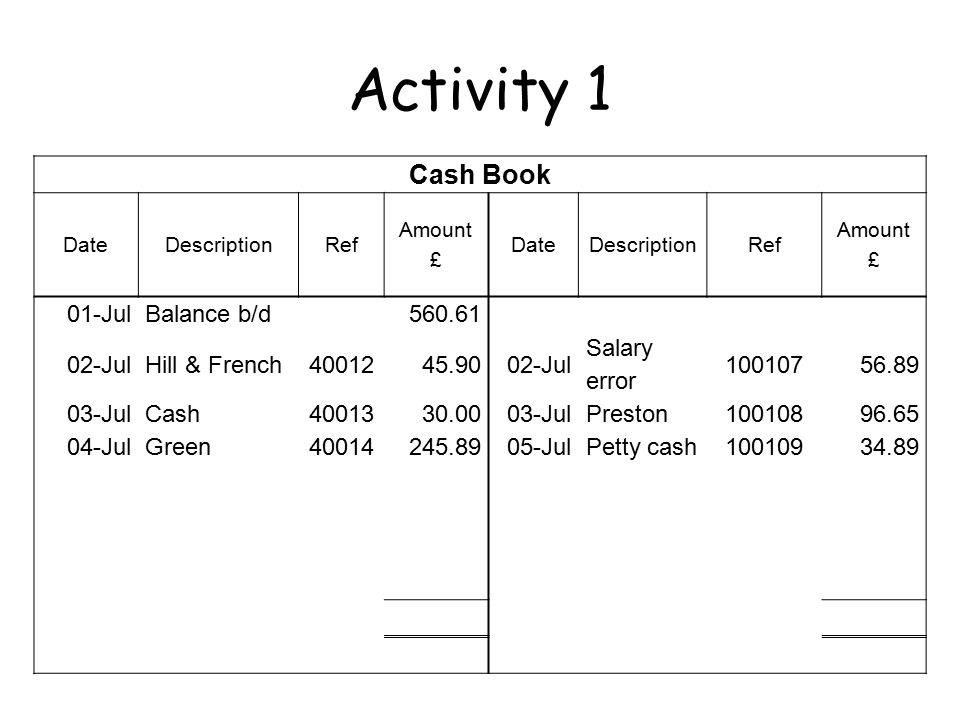We can assume debits to be inherently “good” and credit are “bad”. Some take debits to imply profit and credit to imply loss when that basically isn’t true. One cannot exist without the opposite, and they’re both needed to offer a full monetary picture. It’s particularly helpful when you’re reviewing journal entries or trying to steadiness books precisely. Double-entry bookkeeping is the foundation of correct accounting.
- Debits and credits help create accurate monetary statements and reviews.
- As A End Result Of many transactions use cash, tracking this account is essential.
- When money or worth goes out, the corporate credit the asset.
- Subsequent, you have to switch all expense account balances to the revenue summary account as nicely.
Common Debit And Credit Score Eventualities For Small Companies

It is accepted accounting apply to indent credit score transactions recorded within a journal. This might happen should you modify or reverse the expenses you beforehand recorded. For instance, let’s say you have been charged for a service you didn’t end up utilizing, and the vendor issued a refund. You would credit the expense account for that service to reflect the refunded quantity.
Discover the ins and outs of 401k account securities accounts, together with professionals and cons, to make informed funding selections. If you’ll be able to understand these primary rules, you’ll not solely cross Accounting 101, however you’ll have a better foundational understanding of what your numbers mean. An expense is a debit as a outcome of it’s technically a discount in equity. Fairness decreases (DEBIT) when the business owner pays themselves, or when the business is unprofitable. Liabilities increase (CREDIT) when a enterprise borrows cash or can’t pay a debt quicker than the curiosity accumulation. Let’s start with the accounting equation and another fundamental definitions.
What Debit And Credit Score Mean In Accounting Phrases

A credit score will increase the account balance of Liabilities, Fairness, and Earnings accounts. When we debit a negative account, the stability all the time decreases. So debits lower the steadiness of Equity, Income, and Liabilities. There are 5 types of accounts in the accounting system as seen in the above chart. Every account kind can be categorised as a «optimistic account» or «unfavorable account» relying on whether the account sort sometimes maintains a positive or unfavorable stability.


Managing debits and credits by hand can take up lots of time and leave room for errors. That’s why accounting software program is so helpful; it handles both sides of your transactions with just a few clicks. Make it a behavior https://www.simple-accounting.org/ to reconcile your accounts with your financial institution statements regularly—whether that’s weekly or monthly.
There usually are not two columns to submit an entry, so to indicate something so simple as recording a expense paid with cash the entry could be ($100 to expense account, -$100 to cash). The Place I get really confused is recording credit to accounts the place the normal balance is a credit score balance. A debit is a bookkeeping entry that results in the rise of an asset or a lower in a legal responsibility or homeowners equity.
Credit balances are typically found in legal responsibility accounts, fairness accounts, and revenue accounts. They symbolize obligations, ownership pursuits, or revenue generated by a enterprise. Debits improve belongings, and credit improve liabilities and equity. By maintaining debits and credits in balance, your monetary statements will remain error free. Closing entries mark the end of an accounting period and reveal the ultimate balances of income, expense, and owner’s equity accounts.
When studying bookkeeping basics, it’s useful to look by way of examples of debit and credit score accounting for varied transactions. In basic, debit accounts embody assets and money, whereas credit accounts include equity, liabilities, and revenue. Adjusting entries serve the purpose of correcting errors and ensuring correct monetary statements. They must be made at the finish of an accounting interval to account for objects like prepaid bills, accrued revenues, and accrued bills. After completing these steps, it’s crucial to organize a post-closing trial steadiness.
It represents the surplus of credits over debits in a financial assertion. In accounting, a credit score entry will increase liability, equity, or income accounts, whereas reducing asset or expense accounts. For instance, when a buyer pays for items or companies on credit score, the amount owed by the client is recorded as a credit balance in the accounts receivable account.
According to Robert Kiyosaki, studying accounting (especially the difference between an asset and a liability) is step one in financial literacy. The whole amount you debit must at all times equal the whole amount you credit. When cash or worth goes out, the company credits the asset. Each transaction includes at least one debit and one credit score to completely different accounts. Liability accounts present what an organization owes, like loans and accounts payable.
